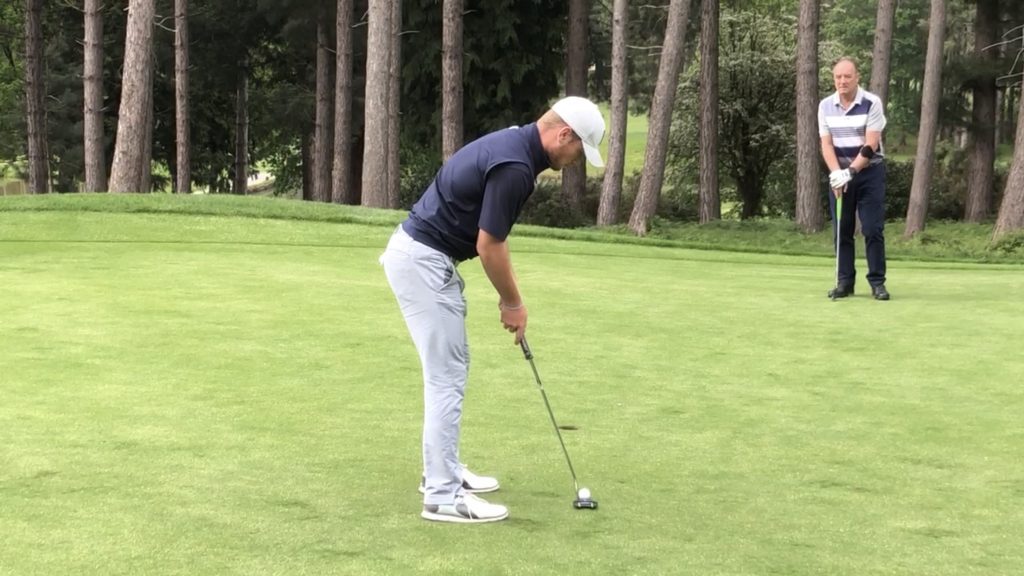
1. Read the putt from multiple angles
This one sounds obvious, but I see too many players miss-read putts because they don’t look at the putt from multiple angles. The side of the putt will give you a look at the distance and up/down-hill and the low side will always give you the best look at the slopes. Visualize the ball going in the hole from each angle you look at the putt from. By the time you start your stroke you will have seen it go in from 4-5 different views.
2. Determine Your Start Line
There could be several lines into the hole depending on whether you hit the putt firmly into the hole or die it in. Determining this will help you find your start line. From my experience there are 2 ways to make sure you are aligned properly to your start line. #1 Using a line on the ball. I know many players that have success with this method, but my preferred method is #2, spot putting. When I look down at the ball, I don’t want to be distracted by any markings, so I turn it so that I can’t see anything on the ball. I prefer to find a spot in front in front of the ball for it to roll over in the first 6-12 inches. Once I have that spot, and the putter face is aligned to it, I then look back down the line and engage my senses with the whole putt, before starting my stroke.
3. Your stroke doesn’t have to be perfect!
The most important thing for each putt is your intention for it and how well you can hold your attention on that intention while you’re over the ball. The stroke has to be reactive, not proactive.
I’ve noticed that when some players miss a few putts (especially short ones), they start to focus too much on what the putter is doing and their technique. The intention for the putt that you have in front of you will tell your body what it needs to do, you don’t want to be consciously thinking about your movement. Studies show us that the best putters, don’t necessarily have consistent strokes, but the outcome is very consistent. They are locked in with the visual image of the putt and imagining the feel of it which allows them to return the putter square to the start line with the right amount of force on the ball. There’s no conscious awareness of the stroke. When any player starts focusing on movement and the path of the putter, performance will suffer.
4. Use your imagination and be fully engaged
During your rehearsal and after you are set up properly, your attention needs to go to the sensations of the putt. What will it look, feel and sound like? As I mentioned in #3, your movement during your stroke needs to be subconscious, that is, your subconscious mind will send the messages to the muscles, based on what your eyes and “mind’s eye” are telling it. When you are deep into what the sensations of how the putt will look, feel and sound like (how fast it will roll, the line it will follow, where it will go in on the hole and what the strike will feel like), your mind will be quiet and you will be fully engaged and committed to the putt. This will produce the most fluid movement and the best outcome. The opposite is being distracted by thoughts such as what the putt is worth to you, not missing it, or what you will look like in front of the other players if you miss.
5. Be present while you wait to hit your putt
In the moments before you hit your putt, you don’t want to be adding pressure by thinking about what making or missing the putt will mean for you. If you do, you’re taking yourself into the future of uncertainty, which will cause performance anxiety – making you more tense and it will be harder to focus on your intention. While you are waiting to putt, try focusing on your breathing, noticing your surroundings and what the ground feels like beneath your feet (these are ways to be more external and get out of your head).
Lastly, measure the success of every putt, not by whether it went in or not, but by whether you stayed in the process (the 5 steps above) and how engaged and committed you were to the putt.
If you’d like to learn more about my approach to putting, please check out my Mental Game of Putting Audio System which contains practical drills to work on these skills and improve your ability to putt under pressure.

